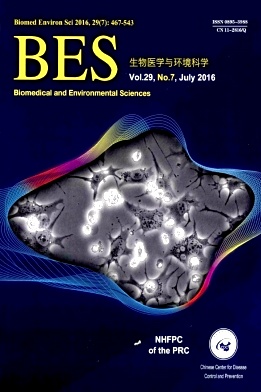C-reactive Protein Level, Apolipoprotein B-to-apolipoprotein A-1 Ratio, and Risks of Ischemic Stroke and Coronary Heart Disease among Inner Mongolians in China
doi: 10.3967/bes2016.062
-
Key words:
- C-reactive protein /
- Apolipoprotein B-to-apolipoprotein A-1 ratio /
- Ischemic stroke /
- Coronary heart disease
Abstract: Objective We aimed to investigate the cumulative effect of high CRP level and apolipoprotein B-to-apolipoprotein A-1 (ApoB/ApoA-1) ratio on the incidence of ischemic stroke (IS) or coronary heart disease (CHD) in a Mongolian population in China.
Methods From June 2003 to July 2012, 2589 Mongolian participants were followed up for IS and CHD events based on baseline investigation. All the participants were divided into four subgroups according to C-reactive protein (CRP) level and ApoB/ApoA-1 ratio. Cox proportional hazard models were used to estimate the hazard ratios (HRs) and 95% confidence intervals (CIs) for the IS and CHD events in all the subgroups.
Results The HRs (95% CI) for IS and CHD were 1.33 (0.84-2.12), 1.14 (0.69-1.88), and 1.91 (1.17-3.11) in the ‘low CRP level with high ApoB/ApoA-1’, ‘high CRP level with low ApoB/ApoA-1’, and ‘high CRP level with high ApoB/ApoA-1’ subgroups, respectively, in comparison with the ‘low CRP level with low ApoB/ApoA-1’ subgroup. The risks of IS and CHD events was highest in the ‘high CRP level with high ApoB/ApoA-1’ subgroup, with statistical significance.
Conclusion High CRP level with high ApoB/ApoA-1 ratio was associated with the highest risks of IS and CHD in the Mongolian population. This study suggests that the combination of high CRP and ApoB/ApoA-1 ratio may improve the assessment of future risk of developing IS and CHD in the general population.
| Citation: | TIAN Yun Fan, ZHOU Yi Peng, ZHONG Chong Ke, BUREN Batu, XU Tian, LI Hong Mei, ZHANG Ming Zhi, WANG Ai Li, ZHANG Yong Hong. C-reactive Protein Level, Apolipoprotein B-to-apolipoprotein A-1 Ratio, and Risks of Ischemic Stroke and Coronary Heart Disease among Inner Mongolians in China[J]. Biomedical and Environmental Sciences, 2016, 29(7): 467-474. doi: 10.3967/bes2016.062 |







 Quick Links
Quick Links
 DownLoad:
DownLoad: